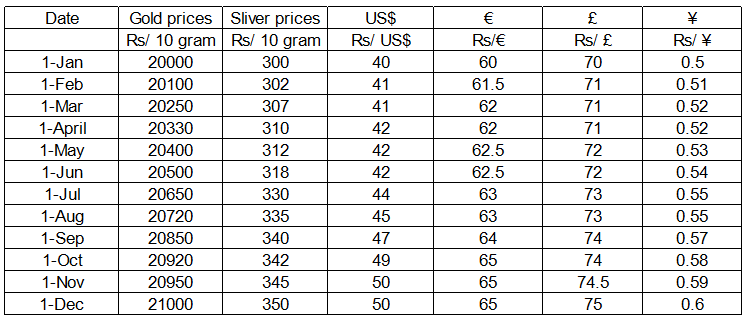answer questions based on the following information:
In the beginning of the year 2010, Mr. Sanyal had the option to invest Rs. 800000 in one or more of the following assets – gold, silver, US bonds, EU bonds, UK bonds and Japanese bonds. In order to invest in US bonds, one must first convert his investible fund into US Dollars at the ongoing exchange rate. Similarly, if one wants to invest in EU bonds or UK bonds or Japanese bonds one must first convert his investible fund into Euro, British Pounds and Japanese Yen respectively at the ongoing exchange rates. Transactions were allowed only in the beginning of every month. Bullion prices and exchange rates were fixed at the beginning of every
month and remained unchanged throughout the month. Refer to the table titled “Bullion Prices and Exchange Rates in 2010" for the relevant data.
Bullion Prices and Exchange Rates in 2010

Interest rates on US, EU, UK and Japanese bonds are 10%, 20%, 15% and 5% respectively.
Mr. Sanyal adopted the following investment strategy. On lst January 2010 he invested half of his investible fund in gold and the other half he kept in fixed deposit of an Indian bank that offered 25% interest per annum. At the beginning of every quarter he liquefied his assets to create his investible fund for that quarter. Every quarter he invested half of his fund in the bullion that gave maximum return in the previous quarter and the other half in the foreign bond that gave maximum return in the previous quarter. However, if in any quarter none of the foreign bonds gave a better return than the fixed deposit of his Indian bank, he invested half of his investible fund in the fixed deposit for the next quarter. On 31st December 2010 Mr. Sanyal liquefied his assets and realized that all of the following options are true except: